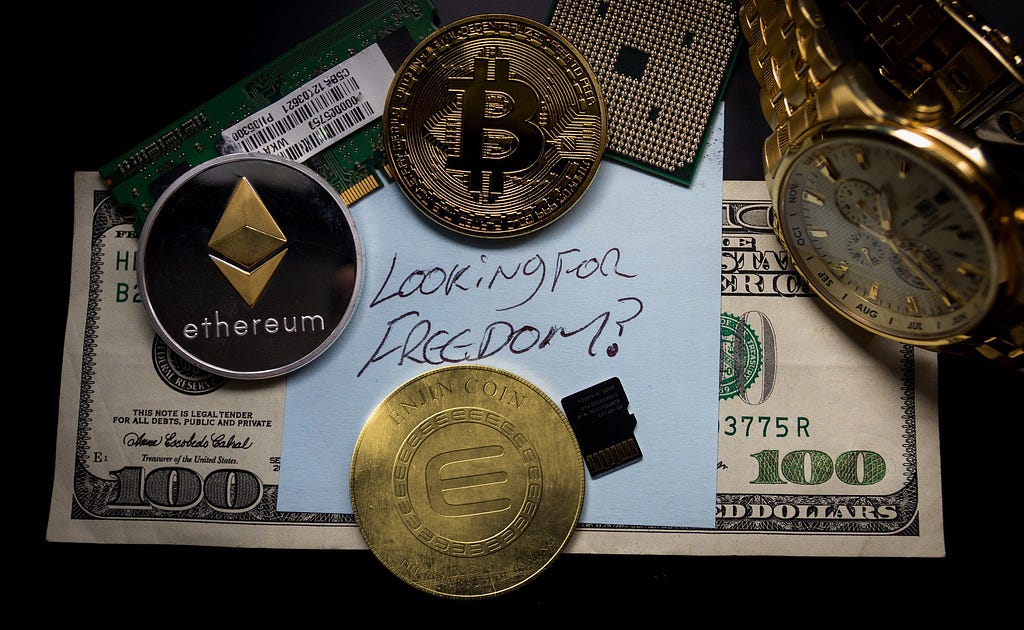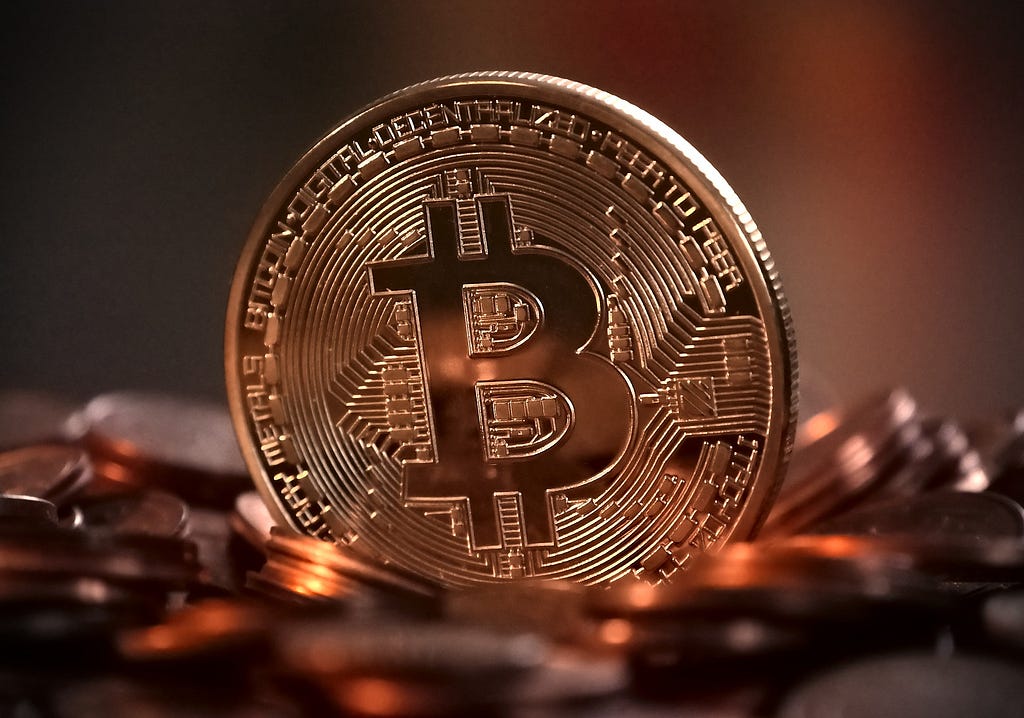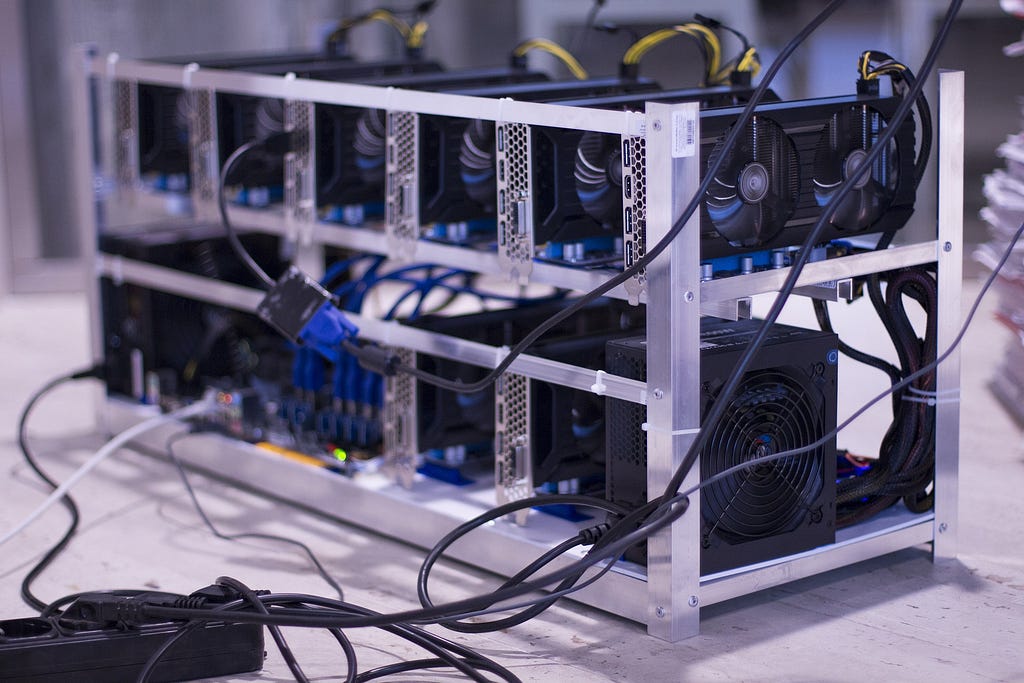Latest news about Bitcoin and all cryptocurrencies. Your daily crypto news habit.

Welcome to the wonderful world of crypto — where entry is cheap and the rides are totally confusing.
Ever ridden a roller coaster and jumped off the top, onto a different roller coaster that crashed into the floor, leaving you with no lunch?
Ever met a costumed character who promised to make you rich, led you to a penthouse suite — then took all your money and ran, suddenly re-emerging with double your investment?
Crypto is no joke.
The money is real, the losses are real, but it’s not gambling if you do your research.
The Crypto Crash Course
Today I’m gonna give you a crash course in what it all means.
I call it a crash course because if you don’t follow up with further research, you will surely crash, of course.
This article is for all of the endearing newbies who would like to join the exciting and confusing world of crypto.
An investment in knowledge pays the best interest.
You may or may not want to invest seriously, but if you do, I highly recommend that you quickly become obsessed with learning as much as you can.
The internet has a wealth of knowledge to offer you. There are thousands of articles, podcasts and videos that will give you all the info you need, and even more of the info you don’t.
Use your own perspective to make your decisions, don’t just listen to that one neighbour you know — that thinks he knows everything.
There are millions of us out here who think we know everything, you can’t listen to all of us!
This article is especially for all of you experienced investors who are constantly answering questions about what crypto is, when you really just want to skip to talking about the coolest coins and projects.
Save your time, send them this article.
Let them do their own research, and then you can talk about the more interesting aspects of crypto, such as how to choose a good investment.
Let’s start with the basics.
What is a Bitcoin?
Fun Fact: Bitcoin, Cryptocurrencies and Blockchain are three separate things. A Bitcoin is an asset, a cryptocurrency is a class of assets and a Blockchain is a type of technology.
Definition: Bitcoin is a cryptocurrency and worldwide payment system. It is the first decentralized digital currency, as the system works without a central bank or single administrator. The network is peer-to-peer and transactions take place between users directly, without an intermediary. These transactions are verified by network nodes through the use of cryptography and recorded in a public distributed ledger called a blockchain.
E.g. It’s 2018, Ben wants to buy a jetski off Heather, she’s interested in cryptocurrencies and is willing to trade Bitcoin for her beloved water vessel. She Googles “secure mobile cryptocurrency wallet” and downloads a mobile wallet app. Ben sends her the Bitcoin, and they sit and have a coffee while they wait for the transaction to land in her crypto wallet — on her mobile phone. When she sees the coins land in her wallet, Ben takes off straight to the river to enjoy his new jet ski.
Bitcoin is the first cryptocurrency — it’s not the best, and it may not always be the biggest.
It was a proof of concept that blazed a new trail, but compared to some of the next generation technologies available today, Bitcoin is like a stone axe in a world of power tools.
Bitcoins transactions can take half an hour or more to process, and there are at least a few dollars in fees charged with every transfer of funds. If you just want to buy an ice cream from the shop, this simply won’t do.
Altcoins
There are much faster cryptocurrencies available, with lower transaction fees. There’s many that can do a lot more, and are therefore going up in value much faster.
These are called Altcoins, “alternative coins” — meaning, any coin that’s not Bitcoin.
Chances are, Bitcoin will exist till the end of humanity, if only as a collector’s item.
But there are many coins out there lining up to take its #1 spot.
Unless Bitcoin’s development team can make it faster, and more affordable to use. We may see another coin become a preferred method of payment and rise to prominence, this year or next.
The computational devices linked together to process Bitcoin’s data are called a nodes.
Nodes
A node is a network of connected machines that receive data simultaneously, and encrypt it onto their hard drives. The fact that the data is stored on many machines instead of just one, keeps the data immune from cyber attacks.
This guarantee of secure, accurate data, is the foundation of blockchain technology.
Typically, a node can be a computer, a mobile phone or any number of computational devices.
Bitcoin is unique in the sense that it requires specialised mining machinery to run a node. This machinery is expensive and uses a lot of electricity. In essence, anyone can run a Bitcoin node, but it’s a lot of trouble.
Generally speaking, when a Bitcoin transfer command is received by the system, it requests an amount of Bitcoin to be transferred from one address to another by adding the transaction details to both addresses.
The sending address will have a subtraction entry added to its records, and the recieving address will gain an addition entry. The information remains there permanently.
This allows the system to calculate the current balance of both addresses, based on past events that are proved to have happened historically, by information stored on the public ledger.
The Ledger
The storage space that is used to hold Bitcoins data is called the public ledger.
Identical copies of the public ledger is stored on a network of nodes, and altered simultaneously by those nodes when a command is received.
A public ledger is essentially a database of historical information which will keep growing until the end of time. This pre-existing data cannot be altered, removed or tampered with unless the whole system is shut down, which isn’t possible unless you shut down many thousands of nodes at the same time.
This database is scattered over multiple nodes to ensure it is completely incorruptible.
What is a Cryptocurrency?
Fun Fact: Bitcoin is a type of cryptocurrency that utilises blockchain technology. There are currently over 1400 different cryptocurrencies available to buy on the internet.
Definition: A cryptocurrency (or crypto currency) is a digital asset designed to work as a medium of exchange that uses cryptography to secure its transactions, to control the creation of additional units, and to verify the transfer of assets.
E.g. it’s 2018, you walk into a retail store and see this awesome jacket, you love it. You grab it. You take it to the counter and see that you can pay using a whole host of cryptocurrencies including Bitcoin, Ethereum, Litecoin & Verge. You choose to pay with Litecoin because you don’t want to wait around too long for the transaction to go through. You send the Litecoin off and keep looking around the shop. You see a shirt you like, but you don’t buy it because you don’t want to have to wait for another transaction to finish. After a few minutes, the shopkeeper lets you know they’ve received the funds and you throw on the jacket and walk out feeling like a million bucks.
Cryptocurrencies vary vastly in speed, transaction times, environmental costs, privacy and functionality.
Finding a cryptocurrency that will actually be used in day to day living is the investors Holy Grail.
Most cryptocurrencies aren’t practical because they’re too slow, expensive or complicated, but some have great teams of talented developers working to fix these scalability issues.
It’s expected that within a few years there will be cryptocurrencies that process instant transactions with miniscule fees.
Backing coins that are undervalued and picking the ones that will achieve practical integration into society is the whole game.
If you can do that — fine, have your Lambo.
A good cryptocurrency is limited in supply, and will go up in demand. That’s what raises the price. It needs to be fast, unhackable and easily transferable.
It needs to be useful.
Cryptocurrencies are stored, created and transferred by a network of nodes called a Blockchain.
You don’t need to understand how the Blockchain works to invest in cryptocurrencies, but it will help you understand which coins will actually work, which are a pipe-dream, and which are pure marketing hype.
What is a Blockchain?
Fun Fact: A Blockchain is a type of technology that is used to power cryptocurrencies such as Bitcoin. A blockchain can function without the use of a cryptocurrency, but a cryptocurrency can’t function without a blockchain.
Definition: A blockchain is a digital public ledger that records transactions and interactions. The maintenance of the blockchain is performed by a network of communicating nodes running co-operative software.
E.g. In the previous example, when Ben purchased that Jetski off Heather using Bitcoin. His transaction was sent to the Bitcoin blockchain where hundreds of nodes checked their records and confirmed his coins existed. Together, these nodes altered the ledger to reflect the transfer by reducing the number of coins in Ben’s Bitcoin address and increasing the number in Heather’s. The new calculations added to Heather and Ben’s address history, confirmed the funds remaining and held the information securely on multiple nodes within the blockchain. Heather could leave her Bitcoin there until she wanted to send it somewhere else. To further interact with her Bitcoin she can use her mobile phone wallet, which sends commands to the blockchain and takes information from it.
There are many different Blockchains out there but we like to call them “The Blockchain” because it makes the technology sound more important.
In reality, one Blockchain can be a set of thousands of nodes that receives commands and records transactions, therefore tracking the flow of currency.
Another Blockchain can be a set of nodes that receives commands, records information, processes interactions and executes more commands automatically based on circumstantial triggers.
The difference between one blockchain to another can be astounding but what makes them all a blockchain is the fact that they have a network of nodes simultaneously storing and processing identical information using cryptography.
“The Blockchain” can be used for far more than transferring currency. Currency is just a piece of data, a simple number. Any any type of information can be stored, altered and transferred by a Blockchain.
This leads us to the more advanced actions or commands that can be pre-programmed and carried out automatically. These are called smart contracts.
What is a Smart Contract?
Fun Fact: A smart contract is an automated computer command that is triggered by pre-programmed circumstances and processed by a blockchain.
Some cryptocurrencies are capable of using smart contracts.
Bitcoin can’t.
Definition: A smart contract is a computer protocol intended to digitally facilitate, verify, or enforce the negotiation or performance of an action. Smart contracts allow the performance of credible interactions without third parties. These interactions are trackable and irreversible.
E.g. If Ben purchased the Jetski off Heather based on a referral from Vicki and Vicki wanted to be rewarded for her referral. It’s possible to program a smart contract to automatically reward referrals by giving Vicky a percentage of Heather’s sale as commission. Ethereum is a type of cryptocurrency that can utilise smart contracts. In this example, the smart contract would be automatically triggered by the transaction. Following the pre-programmed command, the smart contract will reduce the amount transacted onto Heather’s address, and add that amount to Vicki’s address instead.
Smart contracts are like apps or programs that are distributed across computer networks.
Normal computer programs receive commands, execute actions and produce results. A smart contract will use multiple nodes on the blockchain to verify the command, before executing the pre-programmed action, and storing the result securely on those nodes.
Smart contracts are very flexible because data can represent many things such as people, products, assets, and attributes for all those things.
The programming of a smart contract is only limited by the language of the code and what the data is used to represent.
There are many cryptocurrencies that are trying to use smart contracts to achieve things you could only imagine in a sci-fi movie. There are other developers focused on creating applications that are more practical to use in today’s society.
It’s up to you to decide what interests you, and what will interest other investors.
How does it all tie in together?
Okay, so say for example it’s 2022 and you want to wash your Tesla.
You drive up to the auto-wash and swipe your watch at the pay gate and it debits 0.0000000012 ETH (Ethereum — a type of cryptocurrency).
The payment system will send this data to the Ethereum blockchain, and hundreds of nodes will verify that the funds are there and the transaction is legitimate.
The confirmation of your funds may then trigger a smart contract which adds a piece of data that represents the holding of your money in escrow, until the service has been successfully provided.
Upon completion of the wash cycle your Tesla could use inbuilt sensors to rate the cleanliness of your vehicle.
If your vehicle wasn’t considered clean enough for expected service standards Your Tesla could send this information to the Ethereum blockchain and the smart contract would be broken, automatically issuing a refund of the amount in escrow.
Summary
A Bitcoin is a type of cryptocurrency that stores data on a blockchain — which is a public ledger, hosted by a network of nodes.
If that paragraph is starting to make sense to you then congratulations, you now understand enough about cryptocurrencies to keep learning more.
Baby steps please.
We are talking about a technology that will most likely change the fabric of society.
It’s not just an investment vehicle that can be used to pump out lambo’s.
If you run around buying up every coin that has already skyrocketed you will get caught holding bags that are leaking money.
Even worse, you will invest in projects that are all hype and no substance which will never achieve anything tangible. Too many investors are rewarding lies and laziness and encouraging more of the same.
This dilutes investment into projects that have the potential to advance the blockchain to a place where it improves society.
Businesses whose value is solely built upon investor contributions, as opposed to revenue and profits, are a house of cards waiting to collapse. This is no different for cryptocurrencies.
This is why experienced stock market cronies are calling Bitcoin a bubble. This is why we need to invest in cryptocurrencies that offer realistic expectations of gaining actual users.
You are the market, you have the power to decide what wins and what loses in the short term. In the long term, society will decide.
As Gary Vaynerchuk says “how you make your money, matters more than how much money you make”
Invest in adoption, invest in usefulness, invest in practicality.
Support projects that deserve it.
This is what will advance crypto and give you the most substantial returns.
Stay tuned for Part II.
Beginner’s Guide to Investing in Cryptocurrency was originally published in Enjin Coin on Medium, where people are continuing the conversation by highlighting and responding to this story.
Disclaimer
The views and opinions expressed in this article are solely those of the authors and do not reflect the views of Bitcoin Insider. Every investment and trading move involves risk - this is especially true for cryptocurrencies given their volatility. We strongly advise our readers to conduct their own research when making a decision.








